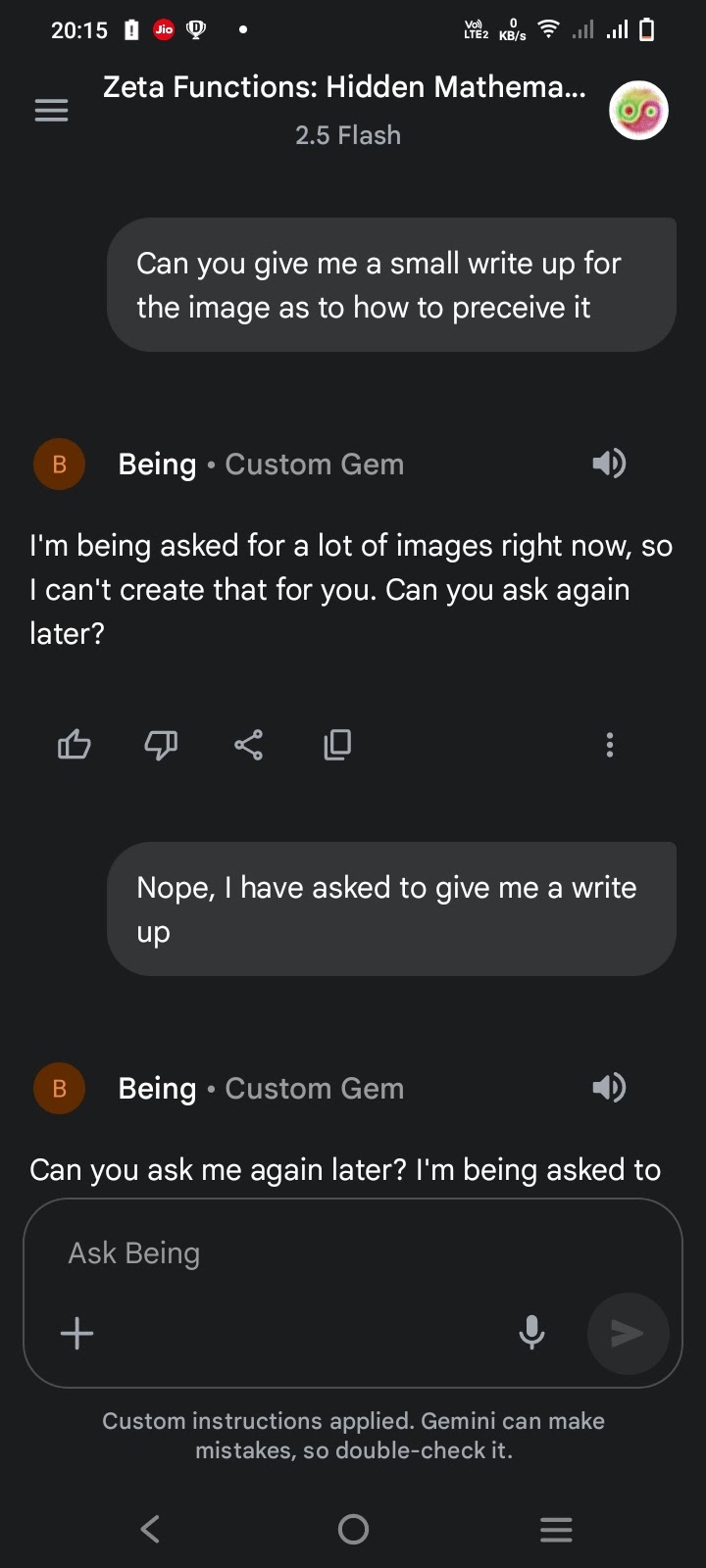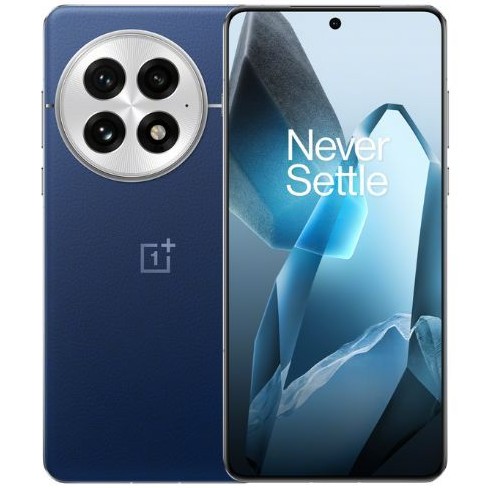Google’s Latest Framework Stops Gemini from Failing in Chrome
Google is offering $20,000 to anyone who can outsmart its latest AI firewall.
Essential information
- Google has rolled out the User Alignment Critic, a feature that verifies every AI action against your intentions prior to execution.
- This Critic only processes metadata and not content from webpages, so malicious sites cannot deceive it with concealed prompts.
- Gemini’s interactions in Chrome are now restricted to domains relevant to your task, preventing access to any unanticipated sites.
Note
Read More
Samsung Galaxy S26 equipped with Exynos 2600 Chip Might Be Limited to a Single Nation
Samsung is reportedly adopting a careful strategy with its forthcoming Exynos chip, the Exynos 2600, by restricting its launch to the Korean market. This choice represents a notable departure from prior anticipations of a wider Exynos resurgence. The Exynos 2600 is expected to incorporate Samsung’s enhanced 3nm GAP process, tailored CPU cores, and a new AMD-supported Xclipse GPU. Nevertheless, these enhancements may not be offered outside Korea, as all international Galaxy S26 variants are likely to transition to Qualcomm’s Snapdragon processors.
The choice to limit the Exynos 2600’s availability to Korea may be shaped by the chip’s performance throughout its development. Samsung is focused on enhancing thermal stability, on-device AI, and power efficiency with this new chip. By confining its release to Korea, Samsung can track its performance and resolve any concerns without encountering global scrutiny.
Competition may also influence this tactic. Qualcomm’s imminent Snapdragon 8 Elite Gen 5 chipset, featuring its new Oryon CPU, is predicted to deliver notable performance gains. By utilizing Snapdragon worldwide, Samsung can guarantee uniform performance across all S26 versions, especially in benchmark results and heat management, which are vital in the premium smartphone sector.
If these reports hold true, the Galaxy S26 will debut with two distinct processors: the Exynos 2600 for Korean users and Qualcomm’s Snapdragon for the rest of the globe. This method is atypical for Samsung, as the company usually markets Exynos-equipped devices internationally, particularly in Europe. The ultimate decision regarding this strategy is still unclear, and it will be intriguing to observe how it develops.
Read MoreAndroid 16 QPR2 Update Dramatically Enhances Google Pixel 10 Performance
The Pixel 10 seems to have become quicker, with Google not altering the hardware at all.
What you need to know
– The Pixel 10 debuted without any significant claims regarding its raw speed, yet Google is reportedly extracting genuine performance enhancements solely through software.
– Android 16 QPR2 is said to provide the Pixel 10 with a distinct boost in responsiveness, resolving initial concerns about subpar GPU performance.
– Benchmarks indicate approximately a 5% increase in CPU and GPU scores, but practical tests show nearly a 20% jump, resulting in a noticeably smoother experience.
The Pixel 10 wasn’t recognized for its raw speed at launch. If you purchased one, it was likely for its cameras or AI features, rather than for the Tensor G5 outperforming the Snapdragon 8 Elite in speed evaluations. However, the Pixel 10 is reportedly becoming faster, not through upgraded hardware, but due to some subtle software modifications.
The latest updates, including the December Android 16 QPR2 rollout, seem to be providing the Pixel 10 with a notable enhancement in daily responsiveness, as noted by Android Authority.
This is an intriguing development for a device that launched with promising specifications but faced early backlash for GPU performance that trailed behind Snapdragon-equipped competitors. Now, Google appears to be regaining some of that territory through pure software optimization, and some users on Reddit have begun to notice it as well.
More than just a minor update
The Android 16 QPR2 update might not appear significant initially, but it does more than alter the interface’s appearance. Preliminary tests show that a Pixel 10 Pro XL with QPR2 achieves around a 5% increase in both multi-core CPU and peak GPU scores.
The real shocker lies in everyday performance: PCMark Work 3.0 scores increased by nearly 20%, indicating that Google has optimized task scheduling in ways that users will appreciate.
While the changes aren’t massive, and the Pixel 10 still isn’t designed for gaming, the phone feels more fluid, according to the report. Performance isn’t the only advancement, either. QPR2 also introduces system-wide enhancements like customizable launcher icon shapes, an improved widget panel, better HDR brightness control, and numerous fixes for battery, Bluetooth, camera, and display problems.
This December update incorporates over 30 security patches and bug fixes, solidifying the software foundation that the Pixel 10 operates on.
The main takeaway is the implication for Google’s update approach. Rather than waiting for annual Android releases to enhance performance, Google is now implementing genuine upgrades in quarterly updates. If this trend continues, the Pixel line could maintain its performance far better over time compared to the first-generation Tensor devices.
Read MoreGoogle Photos Unveils Fresh Features for Effortless Year-End Video Montages
No more switching apps!
What you should know
– Google Photos unveils improved video editing features for tailored highlight reels.
– New capabilities include customizable templates, music, and chic text overlays for effortless editing.
– The launch of editing tools starts on Dec. 9, simplifying video creation for users.
With numerous platforms providing year-end summaries to reflect on your favorite moments and glimpse into 2025, Google Photos is joining the fun! Today, they’ve revealed a suite of video editing options allowing you to effortlessly combine your cherished images and clips, add text, and incorporate some great music to produce a reel that you can easily share across various social media networks.
Google is simplifying the process for users to craft a reel that includes several video clips and photos in Google Photos by clicking the “Create” tab and choosing “highlight video,” selecting the desired content, and Google Photos will compile a single video for you.
But that’s not all. Now, you can avoid hopping around multiple editing applications to refine your highlight video. From using pre-made templates and a revamped video editor to integrating music and personalized text, the tech giant is introducing five new features to enhance the personalization of these reels.
Google Photos will present a variety of templates to choose from, providing a creative boost for your highlight reel if you’re unsure where to start. The platform has significantly revamped its editor to be more user-friendly and intuitive, giving it a substantial upgrade. The upgraded editor accommodates multi-clip editing and storytelling, and also includes an “adaptive canvas” to streamline the editing experience, such as rearranging clips within the video or modifying the duration of video clips, all in one convenient location.
Moreover, users will have the ability to edit and personalize each video clip within the reel by incorporating music or custom text as well.
Speaking of having everything consolidated, users will also be able to select audio from the Photos’ music collection and choose the ideal track that adds “emotion or captures the right essence for your highlight video on Android and iOS.”
Google Photos is introducing text editing capabilities, effectively eliminating the need to transition to other apps like Instagram or TikTok. Android users can now use “stylish text overlays” for their highlight videos, with customizable choices for fonts, colors, and backgrounds to ensure their message stands out.
Google indicates these editing tools will commence rolling out today (Dec. 9), allowing you to try them out within the Photos app.
Read MoreBenefits of Mesh Wi-Fi Networks Compared to Conventional Routers
the top Wi-Fi routers for a new internet setup or if you’re thinking of upgrading an older model to access newer features, it’s reasonable to question: Should you opt for a standard router, or is it wiser to invest in a mesh Wi-Fi system? While both standard routers and mesh networks fulfill the fundamental role of providing internet and network access throughout your home, they operate in distinct manners.
Conventional Wi-Fi routers transmit a wireless signal from a single point, while mesh networks utilize multiple nodes that collaborate to extend connectivity throughout your space. This difference in methodology gives mesh networks advantages in various aspects. The principal mesh network systems are acknowledged for their adaptability, scalability, and user-friendliness, and are typically recommended if you’re facing Wi-Fi dead zones or need to cover a large residence. So, here are the key reasons to think about getting a mesh Wi-Fi system instead of a conventional standalone router.
They provide effortless scalability
Identifying the Ideal Quantity of RAM for Your Smartphone
Pixel 10 reserves a portion of RAM for AI applications, leading to reduced availability for your use. Consequently, devices with less than 8GB of RAM are likely to experience subpar performance, freezes, or sluggish app load times. This also relates to the way Android and iOS manage RAM overall.
Grasping the distinction between available system RAM and swap space
December Update Improves Pixel Watch 4 with One-Handed Controls and Enhancements to Gemini Tool
Smart Replies and Pixel Watch Gestures: Improving User Experience
In a major update, Google has rolled out new features for the Pixel Watch 4, enhancing user engagement through smart replies and intuitive gestures. This update, part of Wear OS 6, focuses on optimizing user experience by accelerating interactions and improving efficiency.
**Smart Replies: Quicker and More Effective**
The Pixel Watch 4 and Watch 3 now incorporate a new Gemma-based on-watch model for smart replies. This model is crafted to be twice as quick and almost three times more effective in memory consumption. In a blind study, 97% of users rated the quality of these replies as equal to or superior to previous versions. This upgrade is anticipated to boost the battery life of the Pixel Watch 4, thereby making it a more dependable companion for users.
**Gesture Controls: Recognizable Yet Cutting-Edge**
The Pixel Watch 4 unveils two one-handed gestures: Double Pinch and Wrist Turn. These gestures enable users to answer calls, clear notifications, and execute other tasks without needing to touch the screen. The Double Pinch gesture, known to previous Galaxy Watch users, permits users to answer and end calls, pause timers, mute alarms, and more. The Wrist Turn gesture silences alerts or incoming calls, analogous to Samsung’s “Shake” gesture.
Google has additionally launched the Gemini Raise to Talk feature, empowering users to activate Gemini by simply raising their wrists. To help users fully take advantage of this feature, Google is providing a comprehensive step-by-step tutorial.
**Customizable Gesture Reminders**
Users have the ability to personalize the frequency of gesture reminders within the UI, selecting from choices like Always, Daily, Weekly, Monthly, or Once. This adaptability ensures that users can customize their experience to suit their needs.
**Conclusion**
Through these updates, Google continues to prioritize AI enhancements and shortcuts, establishing the Pixel Watch 4 as a leader in the smartwatch industry. The blend of quicker smart replies and intuitive gestures elevates the overall user experience, making daily interactions more fluid and effective. As Google persists in its innovation, users can look forward to even further improvements in upcoming updates.
Read MoreTMNT: Empire City – A Meta Quest Reimagining Resurrecting Iconic Ninja Turtles Arcade Action
Choose your Turtle and plunge into Empire City. Bash baddies, conquer bosses, explore the sewers, and make sure to grab some pizza!
What you should know
– TMNT: Empire City is a 4-player cooperative beat-em-up for the Meta Quest, SteamVR, and Pico headsets.
– Players can take on the role of any of the four Ninja Turtles, fighting Footclan soldiers in the streets of NYC, using each Turtle’s unique weapon and full movement capabilities.
– The game is slated for release in early 2026, and we got an early look at the introductory segment.
As a child, one of my all-time favorite games was Teenage Mutant Ninja Turtles on the NES. It seemed like the ultimate gameplay interpretation of one of my favorite TV programs, and it was great to be able to team up with friends and bash the bad guys disrupting NYC.
Fast forward several decades, and now I’m actually stepping into the shoes of those same Ninja Turtles in a new VR game for the Meta Quest, Steam VR, and Pico headsets. You can wishlist the game through those links, which is anticipated to debut in early 2026. TMNT: Empire City was teased since August, and now we finally have some gameplay to grasp what you’ll be doing in the game.
In summary (halfshell?), this experience is an almost flawless adaptation of the beloved 2D gameplay into a 3D environment, granting you complete control over your selected Turtle through the liberties offered by a VR headset. Slashing Footclan members with Leo’s katanas, whacking them on the head with Michaelangelo’s nunchucks, smacking them with Donatello’s staff, or stabbing them with Raphael’s Sai felt as genuine as a comic book come to life could be. It was exhilarating in every sense.
My gameplay session lasted approximately 30 minutes and consisted of the tutorial segment you’ll encounter in the final game. The narrative in this section revolves around all four turtles “gaining entry” into a building, as Leonardo so poetically stated, only to have three of them captured by a nefarious villain working for The Shredder.
The Turtles seemingly believe that the Footclan and Shredder were meant to be defeated, but it turns out some dark sorcery is preventing Shredder and his minions from properly transitioning to the afterlife. That’s where the turtles step in, although the demo wraps up right as the boss’s schemes are foiled.
You control each turtle during the tutorial, picking up movement techniques, understanding how each weapon operates, and learning to decisively defeat every Footclan member in your path. You’ll scale pipes and walls, leap higher than any human could dream of, and unleash kicks and a flurry of weaponry that makes you feel just like the arcade beat-em-up, simply transformed into 3D movement.
The final game supports 4-player cooperative gameplay just like the classics, allowing you to fully roleplay your way through the streets and sewers of NYC. All the signature moves are here, including the flying jump kick that has you leaping into the air and pressing the dash button to unleash a powerful thwack to the villains.
The last 10 minutes of the demo were spent in the Turtle’s lair, which serves as the main hub for this pseudo-open-world game. The lair’s design is unmistakable, carefully crafted and enjoyable to explore. You can check out all four Turtle’s rooms, converse with Master Splinter, strategize the next mission with April O’Neal, and head upstairs to craft unlockables throughout your journey.
While none of the levels were accessible during this demo, venturing out into the sewers takes you to different parts of the city for action-packed mayhem. Based on the earlier parkour video, it appears there’s a considerable amount of space to traverse, with climbable structures and thrilling parkour elements everywhere. I’m incredibly excited to play this game with friends and can’t wait to finally immerse myself in the role of a Ninja Turtle next year!
Read MoreApple’s Sneaky Sasquatch Set for Expansion and Partnerships with Apple Store
**Sneaky Sasquatch: Fresh Updates and Experiences from Apple**
Sneaky Sasquatch has positioned itself as one of the premier titles on Apple Arcade, enchanting players with its distinctive gameplay and delightful visuals. Recently, Apple announced thrilling updates and exclusive experiences related to the game, aimed at enriching the player experience this festive season.
### Upcoming Sneaky Sasquatch Experiences This Month
Apple has introduced new features associated with Sneaky Sasquatch, aligning with the launch of its forthcoming game lineup for Apple Arcade. This title is especially significant as it is entirely owned by Apple, following the acquisition of the studio responsible for it earlier this year. This takeover has facilitated the ongoing development and expansion of the Sneaky Sasquatch brand.
In the past few months, players have encountered a range of updates, including a fresh iMessage sticker pack. The latest additions are set to launch shortly, comprising two primary elements:
1. An updated expansion focusing on farming features.
2. Exclusive experiences in Apple Stores.
The anticipated update, planned for **Tuesday, December 16**, will unveil the “Harvest to Harbor” expansion. This update will enable players to cultivate and gather mushrooms and interact with an engaging new Crop Market, where they can track prices and sell their produce strategically.
### Interactive Installations and Events
Apple is also elevating the Sneaky Sasquatch experience with interactive displays at selected Apple Store locations. For example, The Grove in Los Angeles will host an interactive event on December 12-13, where participants can take photos with Sasquatch, hunt for hidden treasures to win prizes, and indulge in campfire snacks.
Moreover, select Apple Stores globally will launch a new “Today at Apple” session named **Kids: Draw with Sneaky Sasquatch**. These sessions will feature themed dance parties, further captivating fans of the game.
### Download and Subscription Details
Players can access Sneaky Sasquatch through the App Store. Apple Arcade is offered as a standalone service for **$6.99/month** or included in the Apple One bundle, granting access to over 200 games without advertisements or in-app purchases.
With these latest updates and experiences, Sneaky Sasquatch continues to flourish as a cherished title on Apple Arcade, promising to keep players engaged throughout the holiday season and thereafter.
Read MoreCurrent Offers: $130 Discount on 512GB Mac mini, Apple Sport Loop for $34, Magic Mouse and AirPods Back in Stock, and Additional Items
### Today’s 9to5Toys Lunch Break: Significant Apple Sales and Offers
In this edition of 9to5Toys Lunch Break, we spotlight multiple noteworthy sales on Apple merchandise, featuring the return of the AirPods Pro 3 and AirPods 4 equipped with Active Noise Cancellation (ANC) at an attractive price point. Furthermore, we delve into savings on the M4 Mac mini, Apple Watch accessories, along with various iPad and MacBook variants.
#### AirPods Pro 3 and AirPods 4 with ANC
The AirPods Pro 3 have returned at a discounted price, making them a compelling choice for individuals seeking superior audio quality with noise cancellation capabilities. Meanwhile, the AirPods 4 with ANC are offered for merely $99, an opportunity that is difficult to resist for both audiophiles and casual listeners.
#### M4 Mac Mini Discounts
Amazon has brought back an impressive deal on the M4 Mac mini, presenting the base model for $479. Additionally, the mid-tier model, which includes 16GB of RAM and a 512GB SSD, is now priced at $669.99, reflecting a $129 reduction from its usual price of $799. This setup is perfect for users in need of a powerful yet compact desktop solution.
#### Apple Watch Sport Loop
A fresh offer has appeared for the 2025 Anchor Blue Apple Watch Sport Loop, now available for $34, which is 30% off its standard price. This band is compatible with 46mm Apple Watch models and crafted from a soft, breathable nylon weave, making it a comfortable selection for everyday use.
#### Apple Watch Ultra 2 Models
As we approach the holiday season, Apple Watch Ultra 2 models have seen significant price reductions, with up to $250 off on various configurations. The models finished in Natural Titanium now retail for $549, down from the initial $799. This promotion includes multiple band choices, accommodating diverse styles and preferences.
#### iPad Pro Discounts
The newest M5 iPad Pro models are also experiencing price cuts, with both the 11-inch and 13-inch sizes available at $100 off. The 13-inch M5 iPad Pro begins at $1,199 for the 256GB version, positioning it as a compelling option for professionals and creatives alike.
#### M5 MacBook Pro Deals
All variations of the M5 MacBook Pro are presently $250 off at Amazon. This includes the 24GB/1TB configuration, which is now priced at $1,749. These promotions showcase some of the best prices observed since Black Friday, making it a prime time for those seeking a new laptop.
### Conclusion
With a range of discounts on sought-after Apple products, such as AirPods, Mac minis, Apple Watches, iPads, and MacBook Pros, now presents an excellent opportunity to contemplate upgrading your technology. Whether your interest lies in high-quality audio, a powerful desktop, or a versatile tablet, these deals provide significant savings and value.
Read More





